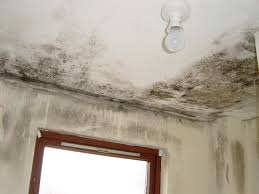damp
英 [dæmp]
美 [dæmp]
- vt. 使潮湿;使阻尼;使沮丧,抑制
- vi. 减幅,阻尼;变潮湿
- n. 潮湿,湿气
- adj. 潮湿的
使用频率:

记忆方法
将“damp”与“暗淡”的概念联系起来。想象一块湿润的布料,它的光泽被水分削弱,显得暗淡无光。这样可以帮助记忆“damp”意味着潮湿或微湿的,带有暗淡无光的感觉。
以上内容由AI生成, 仅供参考和借鉴
中文词源
damp 潮湿的
词源不详。
英语词源
- damp
-
damp: [14] The familiar adjectival use of damp as ‘slightly wet’ is a comparatively recent development, from the 18th century. When the word was first borrowed into English, from Middle Low German damp, it was a noun meaning ‘vapour’ (an application which survives in fire-damp). It comes ultimately from a Germanic base *thump-. The first line of semantic development taken by the word in English was of a ‘noxious exhalation’ (including gas or even smoke, not just vapour), and this is reflected in its earliest adjectival use, in the late 16th century, meaning ‘dazed’, as if affected by such harmful fumes; ‘with looks downcast and damp’, John Milton, Paradise Lost 1667.
Another contemporary sense was ‘noxious’. But the 17th century saw the noun used more and more for specifically wet turbidity: ‘mist’, or simply ‘moisture’. And this formed the basis of the present-day adjectival sense.
- damp (n.)
- early 14c., "noxious vapor," perhaps in Old English but there is no record of it. If not, probably from Middle Low German damp; ultimately in either case from Proto-Germanic *dampaz (cognates: Old High German damph, German Dampf "vapor;" Old Norse dampi "dust"). Sense of "moisture, humidity" is first certainly attested 1706.
- damp (adj.)
- 1580s, "dazed," from damp (n.). Meaning "slightly wet" is from 1706. Related: Dampness.
- damp (v.)
- late 14c., "to suffocate," from damp (n.). Figurative meaning "to deaden (the spirits, etc.)" attested by 1540s. Meaning "to moisten" is recorded from 1670s. Related: Damped; damping.
权威例句
- 1. They all walked barefoot across the damp sand to the water's edge.
- 他们全都光着脚走过潮湿的沙地来到水边。
- 2. The bunk mattress was hard, the blankets prickly and slightly damp.
- 这个铺位的床垫很硬,毯子也很扎人,而且还有点潮。
- 3. If damp, musty buildings make you ill, mould is probably the cause.
- 如果潮湿发霉的建筑令你生病了,霉菌很可能是病因。
- 4. Cracks, bulges, crumbling pointing and damp patches mean trouble.
- 裂缝、凸起、剥落的勾缝和湿斑都意味着存在问题。
- 5. There was a smell of damp wood and machine oil.
- 有潮湿的木料和机油的气味。